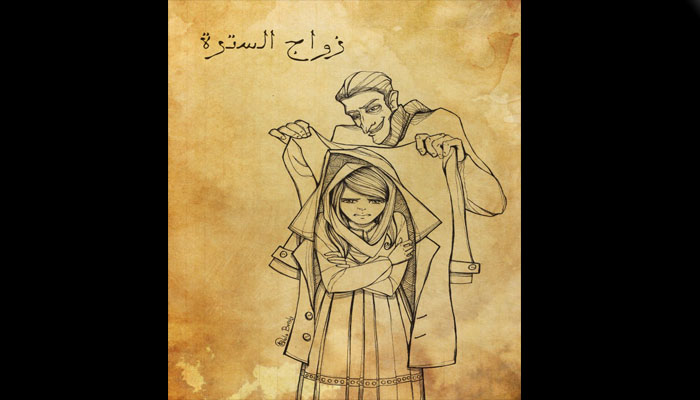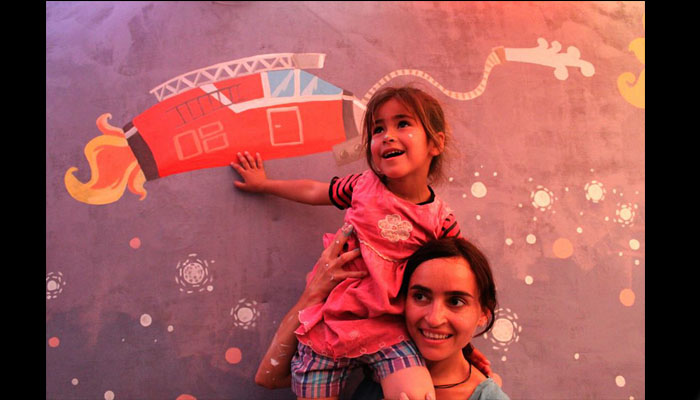Diala Brisly is a young Syrian artist who was born in 1980 in Kuwait. At age 10, she returned to Syria. Instead of studying fine art at an academy, she learned the art of animation online with the help of a friend.
Brisly specialized in animation, comics, and digital art, working with several companies, including SpaceToon, JoyBox, and Star Animation. She also worked independently as an artist, and considers her independent work to be the most important and effective way in expressing herself.
At the start of the uprising in Syria, Brisly participated by designing several posters for a number of campaigns, including the women’s hunger strike at Adra prison, the campaign against child marriage, known as “Protection Marriages”, campaigns highlighting the plight of detainees, amongst other things.

Brisly has exhibited her work at several joint exhibitions around the world, such as one in collaboration with the United Nations entitled “My Hands on the Ground, My Feet in the Air” and one with the Basma Foundation for children with cancer called, “Days Not About Crabs” and others.
She has also illustrated two books written by a young Italian writer who was inspired by his visit to the refugee camps. These books were then distributed to Syrian children in the IDP camps in Northern Syria. Entitled “I Will Return To My Homeland” and “Beginnings”, the books were printed in collaboration with International Medical Corps.
However, Brisly took her artistic work to a new level when she began painting the walls of refugee schools, tents, and buildings. “I met with the organization that was planning the “My Bookshelf” project, and we spoke and decided that I would paint murals on the walls of the refugee camps in Arsal, where they were planning on building a library,” she told SyriaUntold. After this, she went on to draw on the walls of camps in Shatila, the Bekaa valley, and ended up amongst the urban refugees in Istanbul and Reyhanli in Turkey. At some point along her journeys, the mural painting morphed into a collaboration with the students: she would paint and they would take part. “I would leave three children alone with the wall and empty space, and return to see what they did with it,” Brisly told SyriaUntold.

These murals bring a lot of joy and pain for children still suffering from the trauma of war. “When I host a drawing workshop, I give the children papers and pens and I tell them to draw. They end up drawing the war: either missiles or the homes that they’ve left behind,” Brisly said before she explained that she tries to shift their focus away from destruction. “I try to explain to them that planes aren’t just for bombing, and ask them to imagine a place where they would fly to if they were like birds or butterflies or balloons or pilots and to draw their answers.”
When asked how she is able to dream up of art, Brisly said “I don’t know. I dream up of many things -- things to share at exhibitions, things to teach in workshops and what to draw on the walls, and the children help me with these dreams.”
Brisly’s experience with drawing and painting have given her great insight into the psyche of the children, and has helped to invent new ways to tell them new stories. She works with them on creating not just dreams, but visions that can one day become a reality for Syria.



